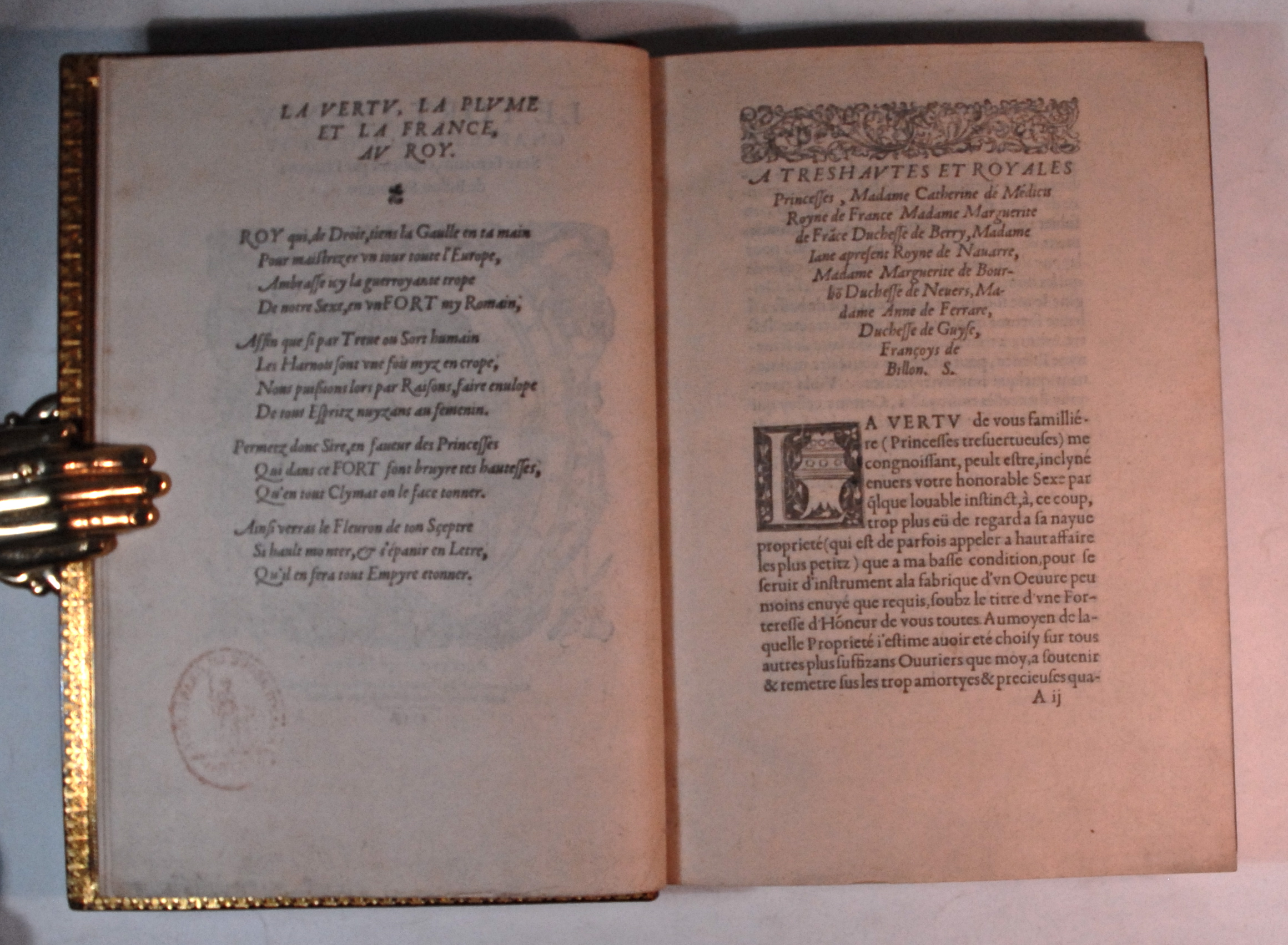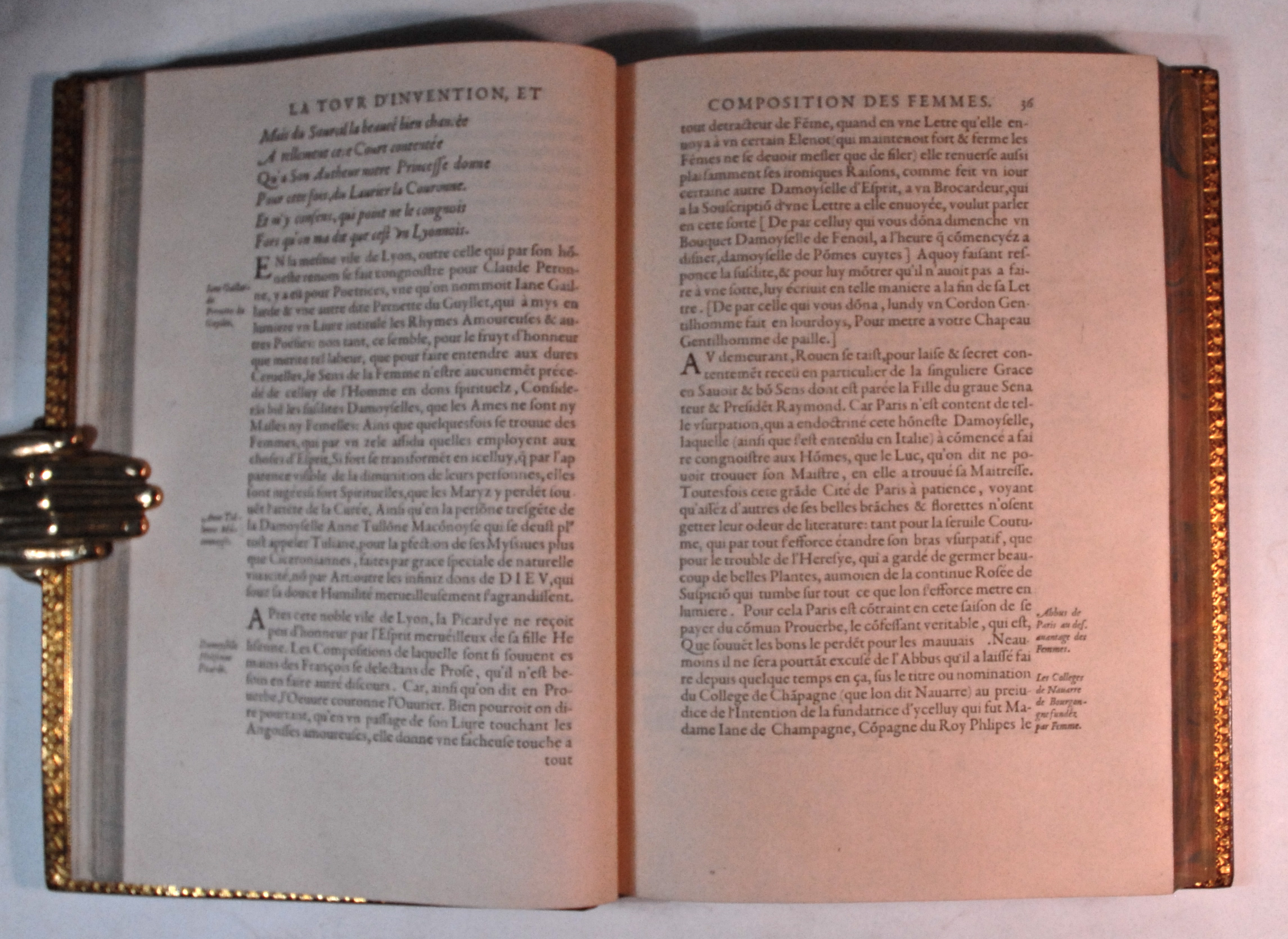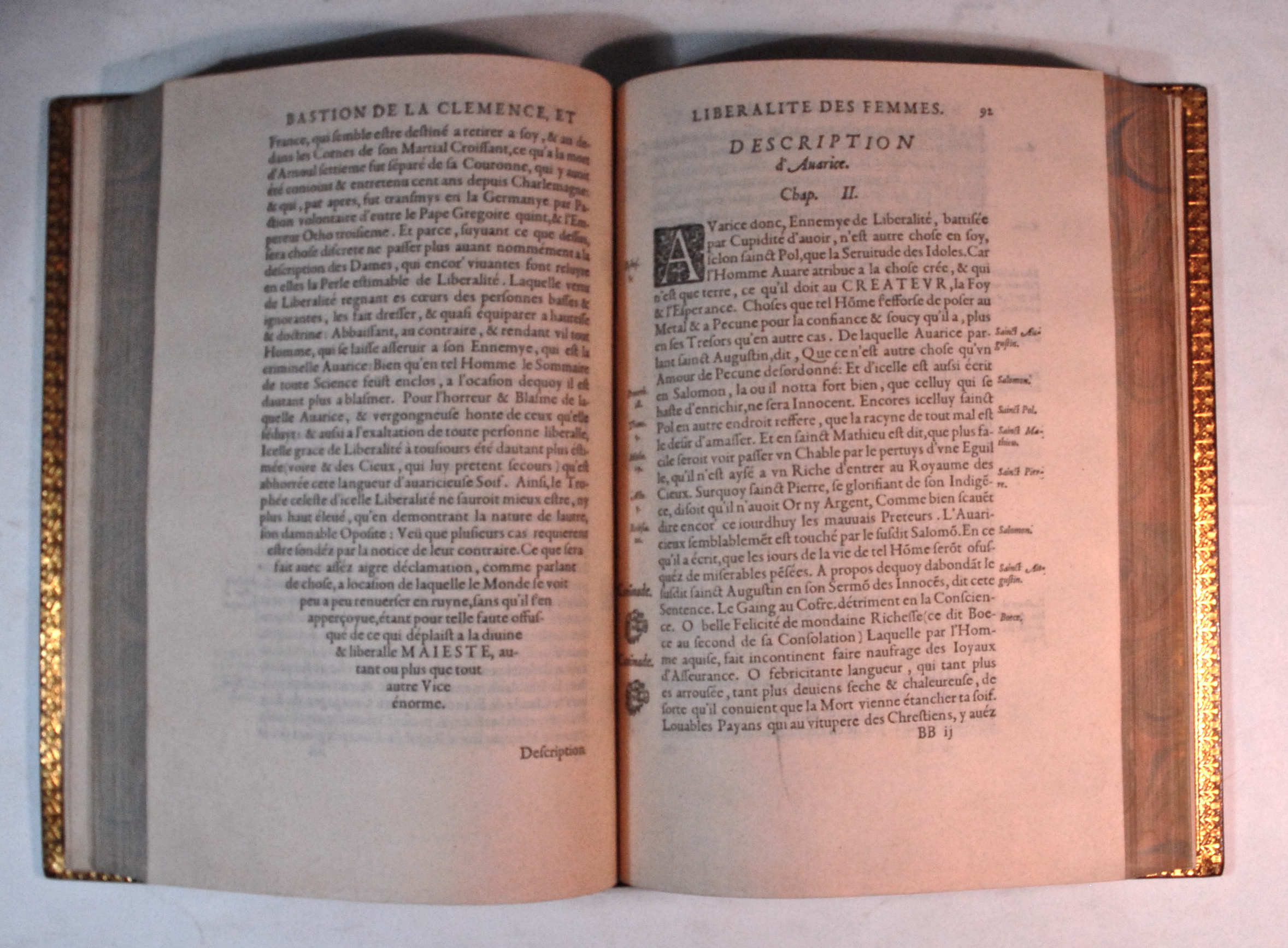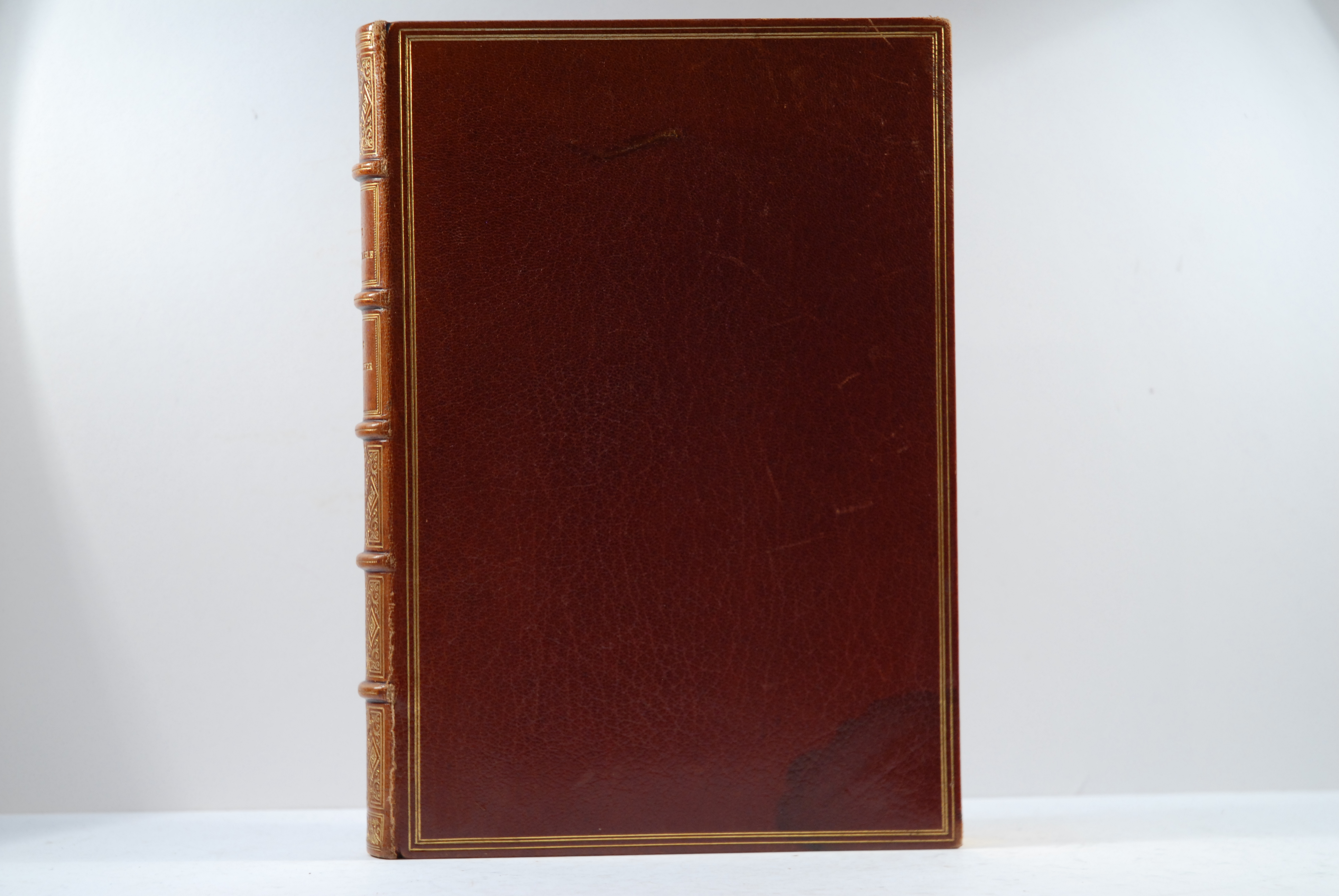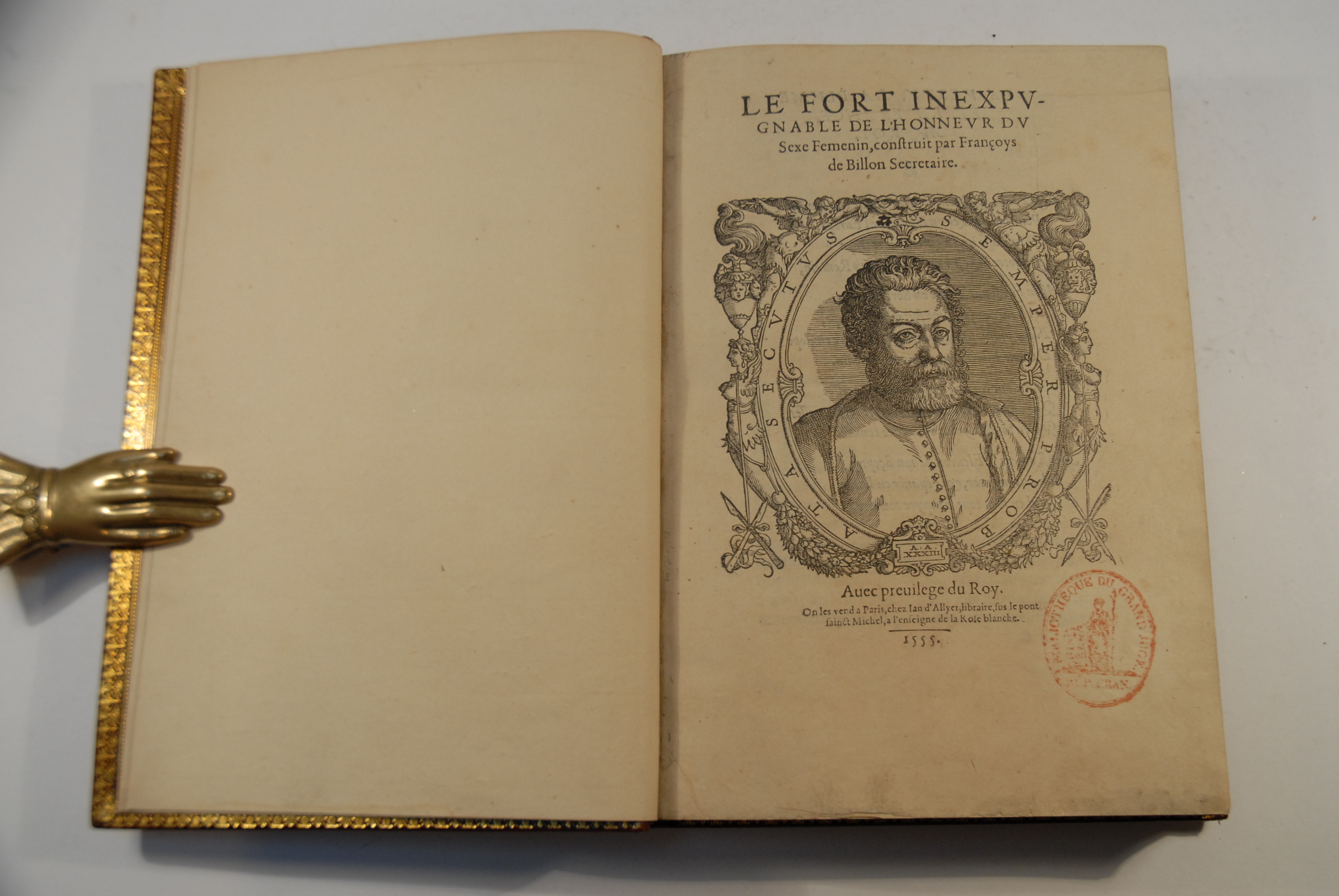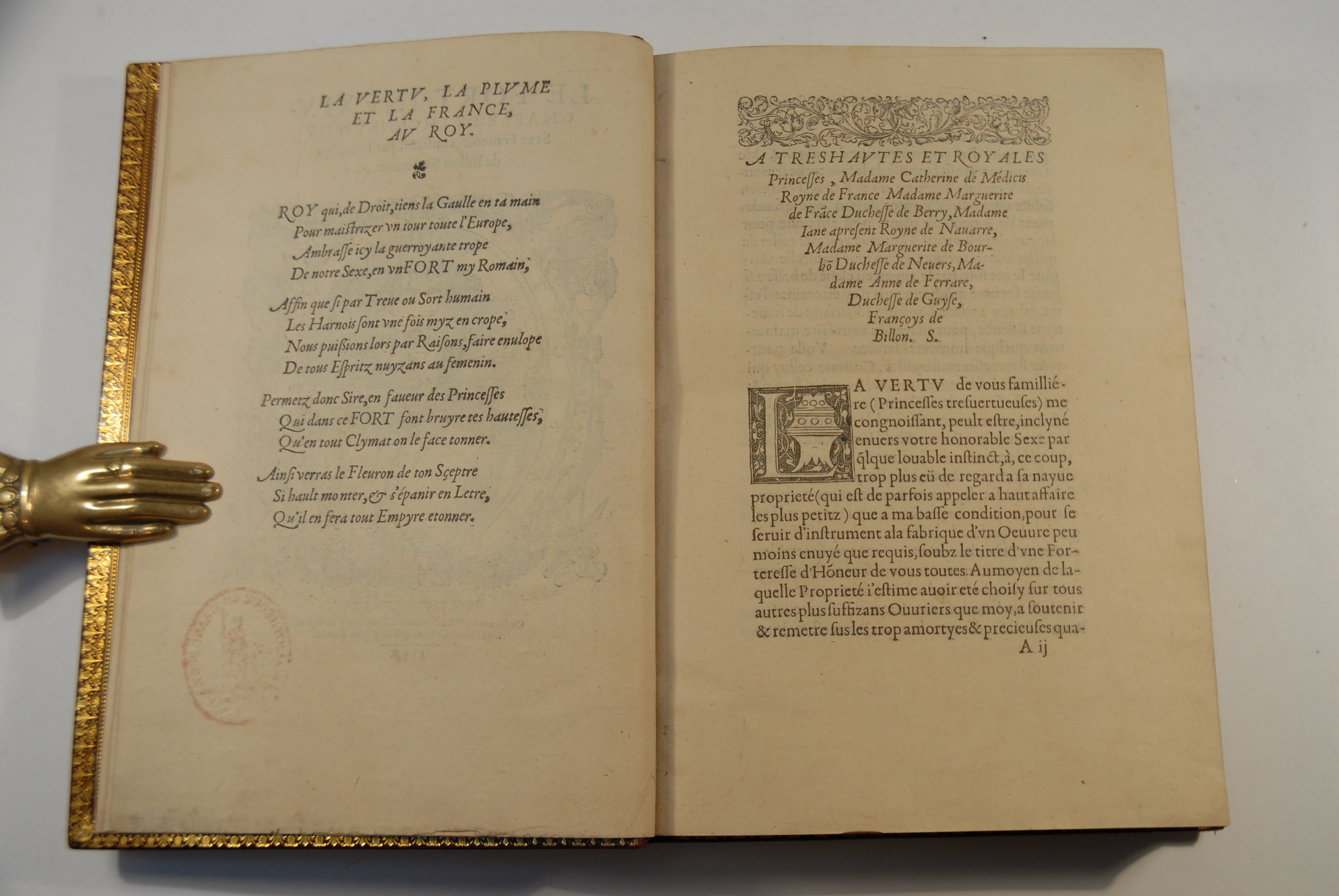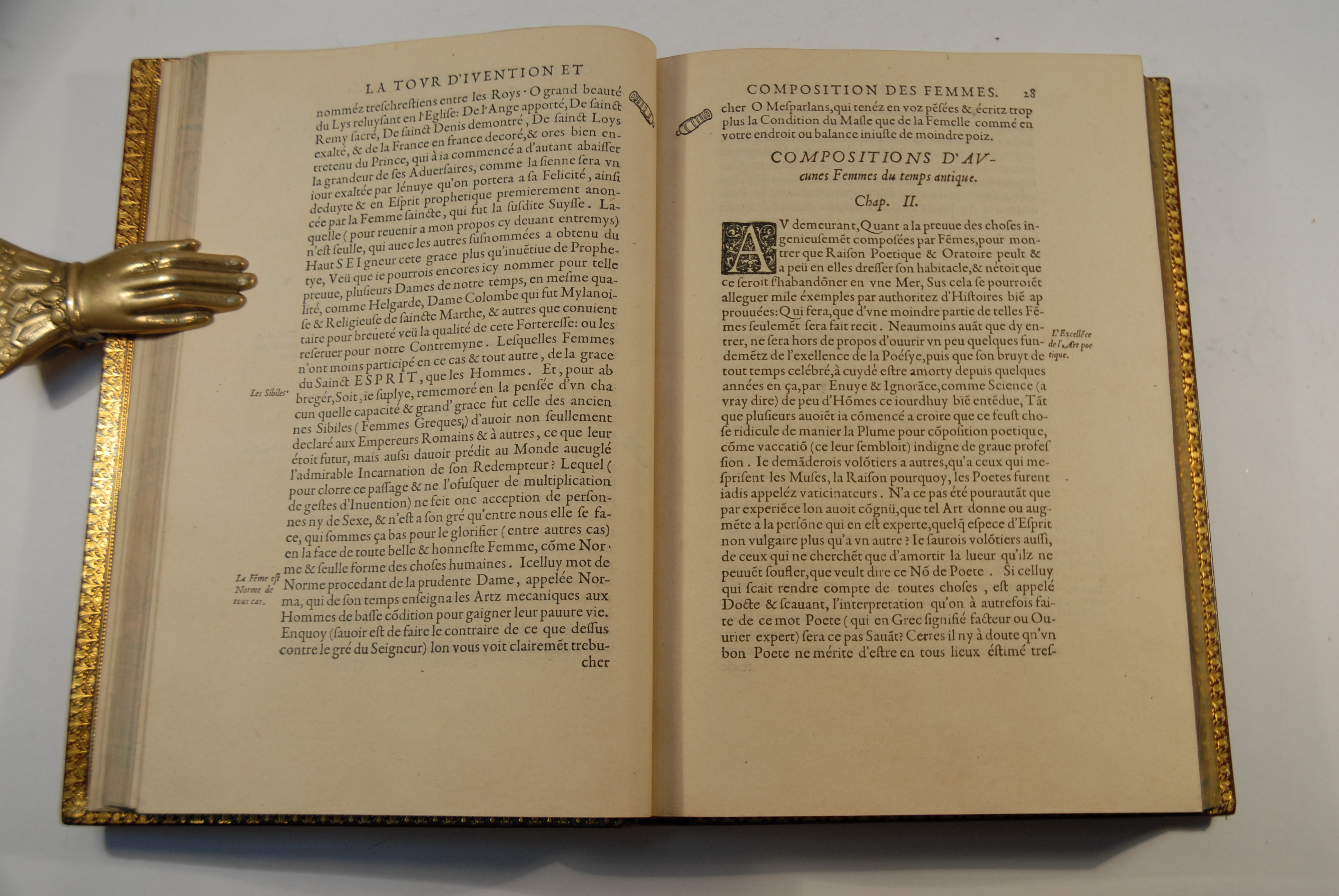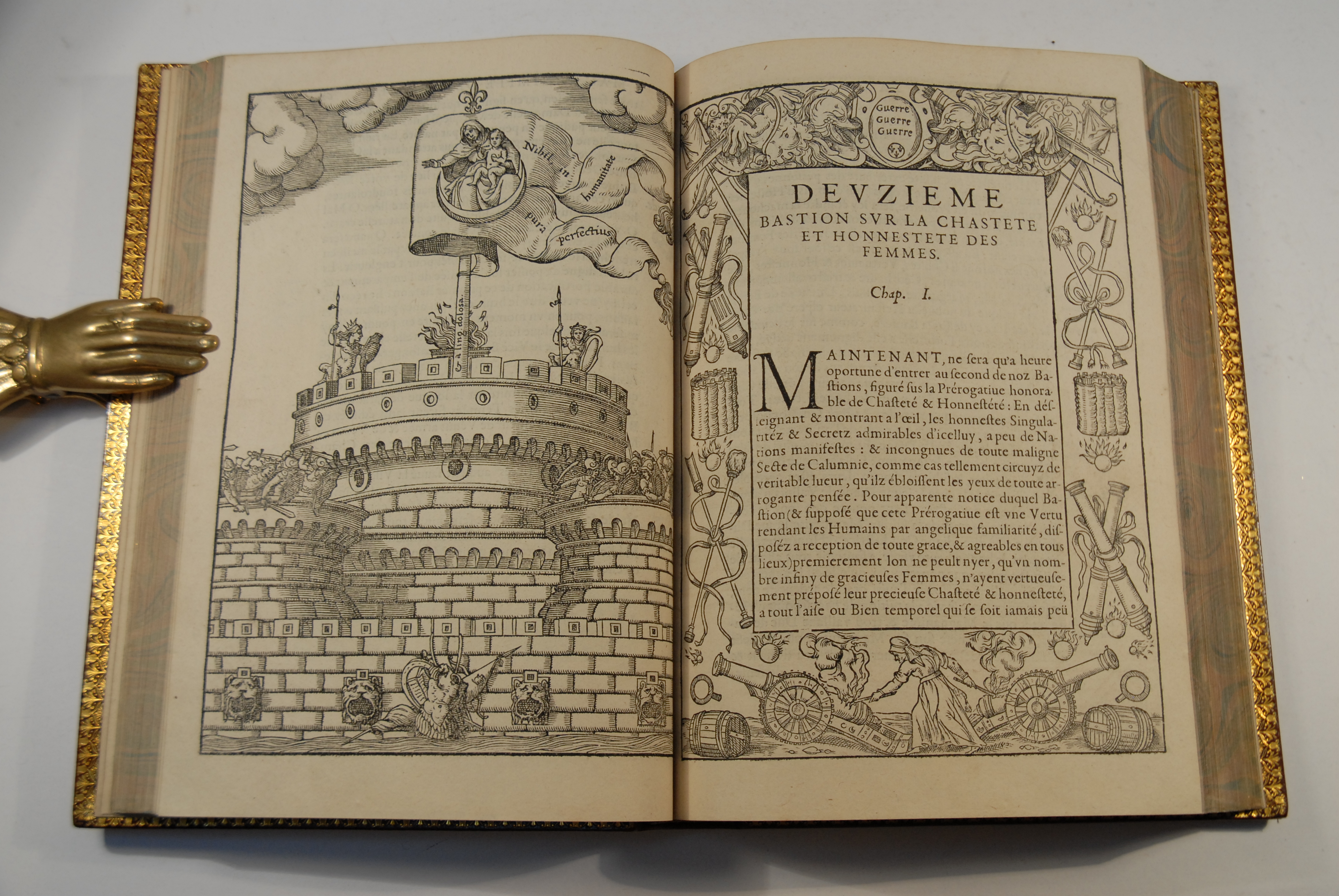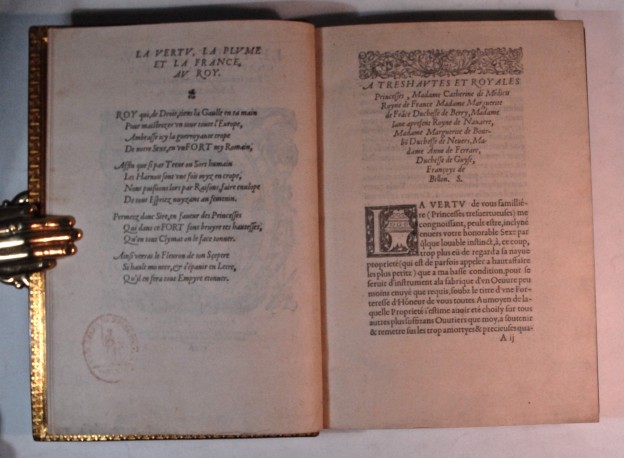DE BILLON, François
A PASSIONATE PANEGYRIC ON THE MERITS OF WOMEN
Le Fort inexpugnable de l\'honneur du sexe femenin
Paris, chez Ian d\'Allyer, 1555, 1 April£9,500.00
FIRST EDITION. 4to., pp. 257, [vi] .Woodcut portrait of the author within architectonic cartouche (repeated), full-page allegorical woodcut of a fort (resembling the Castel Sant’Angelo in Rome) with female figures and soldiers beneath the Virgin and Child supported on a crescent (repeated for 6 chapter openings), chapter openings within woodcut borders of artillery with two cannon being fired by a matron, flaming cannonballs and barrels of gunpowder, full-page woodcut of Athena addressing an all-female audience (repeated for 3 chapter openings), woodcut head and tail pieces, several woodcut marginal pointers in the shape of cannon, woodcut initials. Very skilful small repairs to upper blank margins of two leaves, a little light age-yellowing, a very good copy in crushed purple morocco gilt by Thibaron Joly, spine gilt in six compartments, a.e.g, gilt dentelles (small dampstain to lower corner of upper cover). Stamp c.1800 of the Bibliotheque du Grand Juge de la Republique Francaise in blank lower corner of title.
FIRST EDITION of the “most enthusiastic and passionate panegyric [on the rights and merits of women] to have been written between 1450 and 1550” (Albistur & Armogathe, Histoire du feminisme du Moyen-Age à nos jours), Billon’s strenuous early defence of the equality of the ‘second sex’. Another edition was apparently published with the same date and different title but without giving the printer’s name – either a shared or pirated issue. Little is known about his life, but Billon was born in Paris, the nephew of Artus Billon, Bishop of Senlis. He was an author ‘in the Italian style’, and accompanied Cardinal Bellay to Rome as his secretary in the mid-1550s, where he wrote the present treatise, dedicated to Catherine de Medici. Billon died around 1566, and was one of the principal theorists of feminism in the 16thC, and the work forms part of the literary canon of the ‘Women’s Quarrel’ (‘La Querelle des Femmes’), which was a Europe-wide literary battle that raged for over 300 years between various authors attacking, and defending women (hence the martial imagery), reflecting the sometimes serious and sometimes jocular nature of scholarly argument from 1500-1800; these texts were often reliant on theological sources. The work appeared again in 1564, with a slightly different title.
Built up as an ‘impregnable fort’ of separate ‘bastions’ (chapters), the work is a robust defence of the role of women, peppered with allegorical references, but arguing strenuously for improvements in female education, encouraging women to abandon home and convent for traditionally male-dominated professions, including politics and the military. Billon also advocates the dissolution of arranged marriages and the ending of a woman’s legal subjugation to her husband. He notes that in Europe, where he says women are held in the greatest subjugation, men are also more subjugated; and argues for the qualities (such as honesty, magnanimity, piety and devotion) and achievements (arguing, i.a., that women make better singers -the ‘angelic sweetness’ of the female voice) of women throughout the ages, even disputing with the Bible. The book also includes the first appearance of the word ‘atheism’ (in the context of a people’s lack of belief) and contains probably the first bio-bibliography of female writers and inventors.
BM STC Fr. p. 69; Adams B-2047; IA. 119.358 (six locations); Gay II, p. 342; Brunet I, 945; Graesse I, p. 426; Cioranesco 4010; not in Mortimer or Erdmann.In stock


